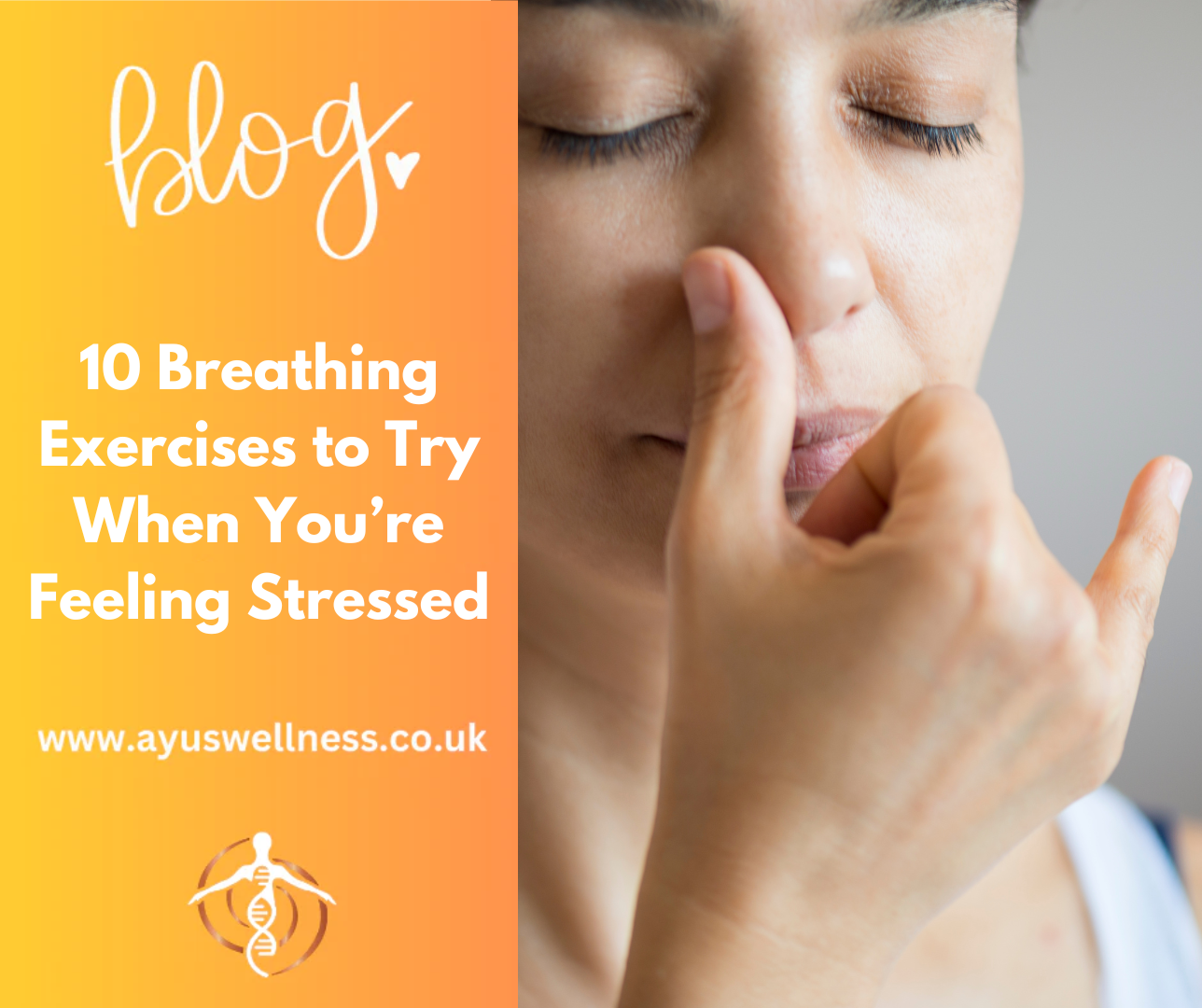
In today’s fast-paced world, stress can feel like an unwelcome companion, disrupting your peace and affecting your well-being. Fortunately, breathing exercises offer a simple and accessible way to find calm amidst the chaos. With just a few minutes a day, you can centre yourself and effectively reduce stress levels.
Breathing techniques don’t require specialised equipment or extensive training—just a quiet space and your focused attention. Let’s explore 10 effective breathing exercises designed to help you manage stress, promote relaxation, and enhance your overall sense of calm.
1. Pursed-Lip Breathing
Pursed-lip breathing helps slow your breathing pace, promoting relaxation by making your exhalations longer than your inhalations.
How to Practise Pursed-Lip Breathing:
- Relax your neck and shoulders.
- Inhale deeply through your nose for a count of 2.
- Purse your lips as though preparing to whistle.
- Slowly exhale through your pursed lips for a count of 4.
Practise this technique 4–5 times a day for optimal results.
2. Belly Breathing (Diaphragmatic Breathing)
Belly breathing encourages deep breaths, activating the diaphragm and reducing shallow breathing patterns associated with stress.
Steps for Belly Breathing:
- Lie on your back with your knees bent and a pillow under your head.
- Place one hand on your chest and the other on your abdomen.
- Inhale deeply through your nose, feeling your stomach rise.
- Exhale slowly through pursed lips, keeping your chest still.
Start with 5–10 minutes, gradually increasing to 3–4 sessions daily.
3. Breath Focus Technique
This technique combines deep breathing with imagery or calming words to create a sense of relaxation.
How to Use Breath Focus:
- Sit or lie down comfortably.
- Inhale deeply and exhale fully while focusing on a calming word or phrase, such as "peace" or "relax."
- Visualise inhaling calm and exhaling tension.
Begin with 10 minutes, gradually extending to 20 minutes for greater benefits.
4. Lion’s Breath
Lion’s Breath is an energising practice from yoga that helps release tension in the face, jaw, and throat.
Steps for Lion’s Breath:
- Sit in a comfortable position with your hands on your knees.
- Inhale deeply through your nose.
- Open your mouth wide, stick out your tongue, and exhale with a forceful "haaa" sound.
Repeat 2–3 times. This practice is particularly effective for releasing pent-up frustration.
5. Alternate Nostril Breathing (Nadi Shodhana)
This technique balances your body and mind by regulating breath flow through each nostril.
How to Practise Alternate Nostril Breathing:
- Sit comfortably and close your right nostril with your thumb.
- Inhale deeply through your left nostril.
- Close your left nostril with your fingers and exhale through your right nostril.
- Inhale through the right nostril and repeat the process.
Practise for 5 minutes, ending on an exhale through the left nostril.
6. Equal Breathing (Sama Vritti)
Equal breathing focuses on making your inhalations and exhalations the same length, promoting balance and calm.
Steps for Equal Breathing:
- Inhale through your nose for a count of 4.
- Exhale through your nose for a count of 4.
Continue for 5–10 minutes. You can extend the counts to 5 or 6 as you become more comfortable with the practice.
7. Resonant Breathing
Resonant breathing involves maintaining a steady breath rate of 5 breaths per minute, enhancing heart rate variability and reducing stress.
How to Practise Resonant Breathing:
- Inhale for a count of 5.
- Exhale for a count of 5.
Continue this pattern for 5–10 minutes. This technique is particularly effective for achieving a deeply relaxed state.
8. Sitali Breath
Sitali breath cools the body and calms the mind, making it ideal for moments of agitation or overheating.
How to Perform Sitali Breath:
- Sit comfortably and curl your tongue into a tube shape (or purse your lips if you cannot curl your tongue).
- Inhale deeply through your tongue or lips.
- Exhale slowly through your nose.
Practise for up to 5 minutes for a refreshing and calming effect.
9. Deep Breathing
Deep breathing increases oxygen intake and helps you feel more grounded.
Steps for Deep Breathing:
- Sit or stand with your back straight.
- Inhale deeply through your nose, filling your lungs completely.
- Hold your breath for a count of 5.
- Exhale slowly through your nose.
Repeat 5–10 times for immediate relaxation.
10. Humming Bee Breath (Bhramari)
This yoga technique uses a humming sound to soothe the mind and relieve stress.
How to Do Humming Bee Breath:
- Sit in a quiet place and close your eyes.
- Inhale deeply through your nose.
- Exhale while making a humming sound, like a bee.
Continue for 5–10 minutes. This method is particularly effective for reducing anxiety and enhancing mental clarity.
FAQs
What is the 4-7-8 breathing technique?
The 4-7-8 technique involves inhaling for 4 seconds, holding the breath for 7 seconds, and exhaling for 8 seconds. It promotes relaxation and helps with sleep.
What are the most effective breathing techniques for stress?
Techniques like alternate nostril breathing, equal breathing, and humming bee breath are highly effective for stress relief.
Can breathing exercises improve sleep?
Yes, many breathing exercises, such as deep breathing and resonant breathing, can help calm the mind and prepare the body for restful sleep.
How often should I practise breathing exercises?
Start with 2–5 minutes once or twice a day, gradually increasing duration and frequency as you feel comfortable.
What should I do if I feel lightheaded during a breathing exercise?
If you feel lightheaded, pause the practice and return to normal breathing. Resume when you feel ready, and consider shortening the duration next time.
Takeaway
Breathing exercises are a powerful and accessible way to manage stress and improve well-being. Techniques like pursed-lip breathing, alternate nostril breathing, and deep breathing can be practised anywhere, offering immediate benefits.
Experiment with these exercises to find the ones that resonate most with you. With consistent practice, you’ll develop a toolkit for managing stress and finding calm, no matter what challenges come your way.



